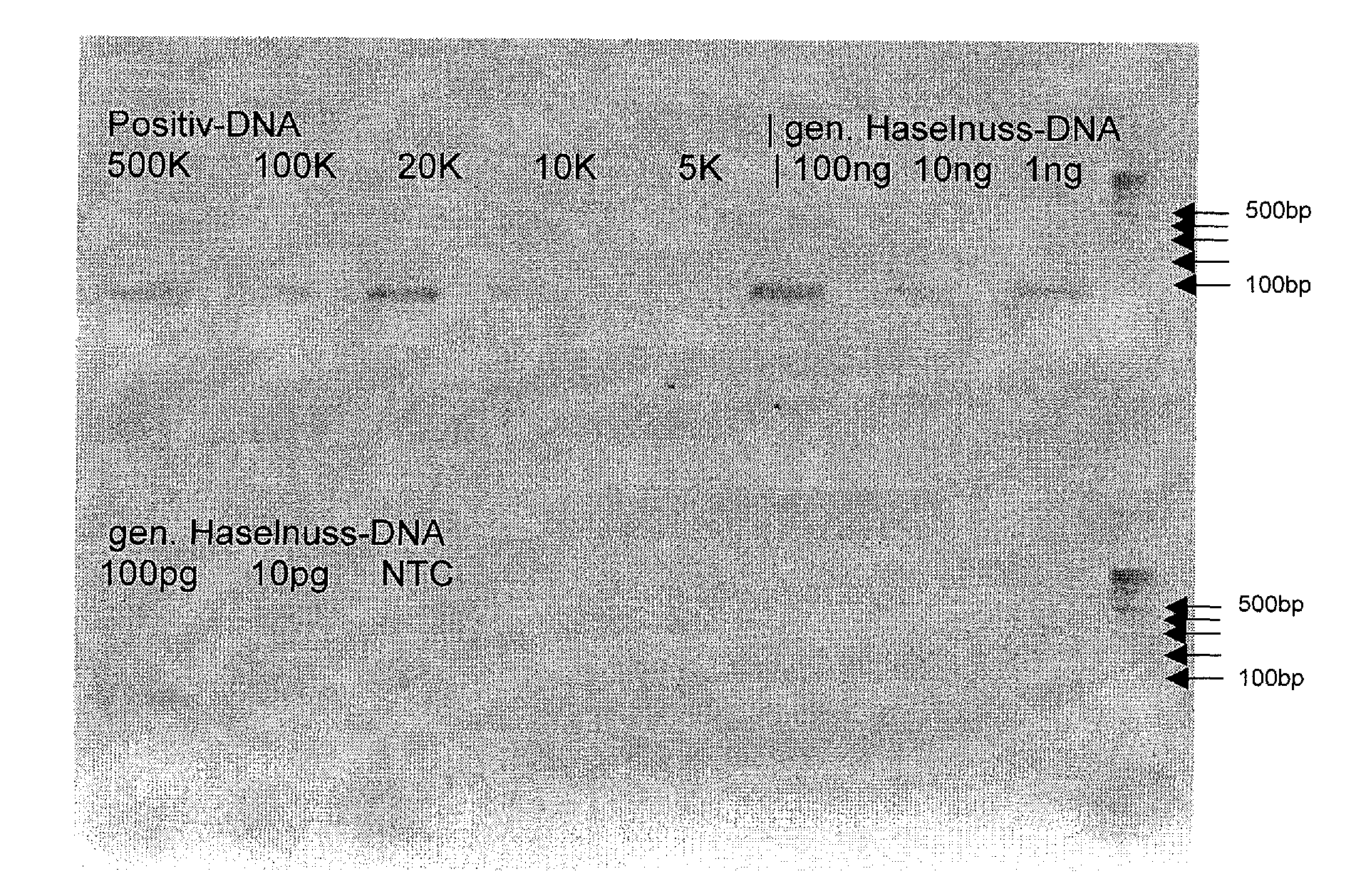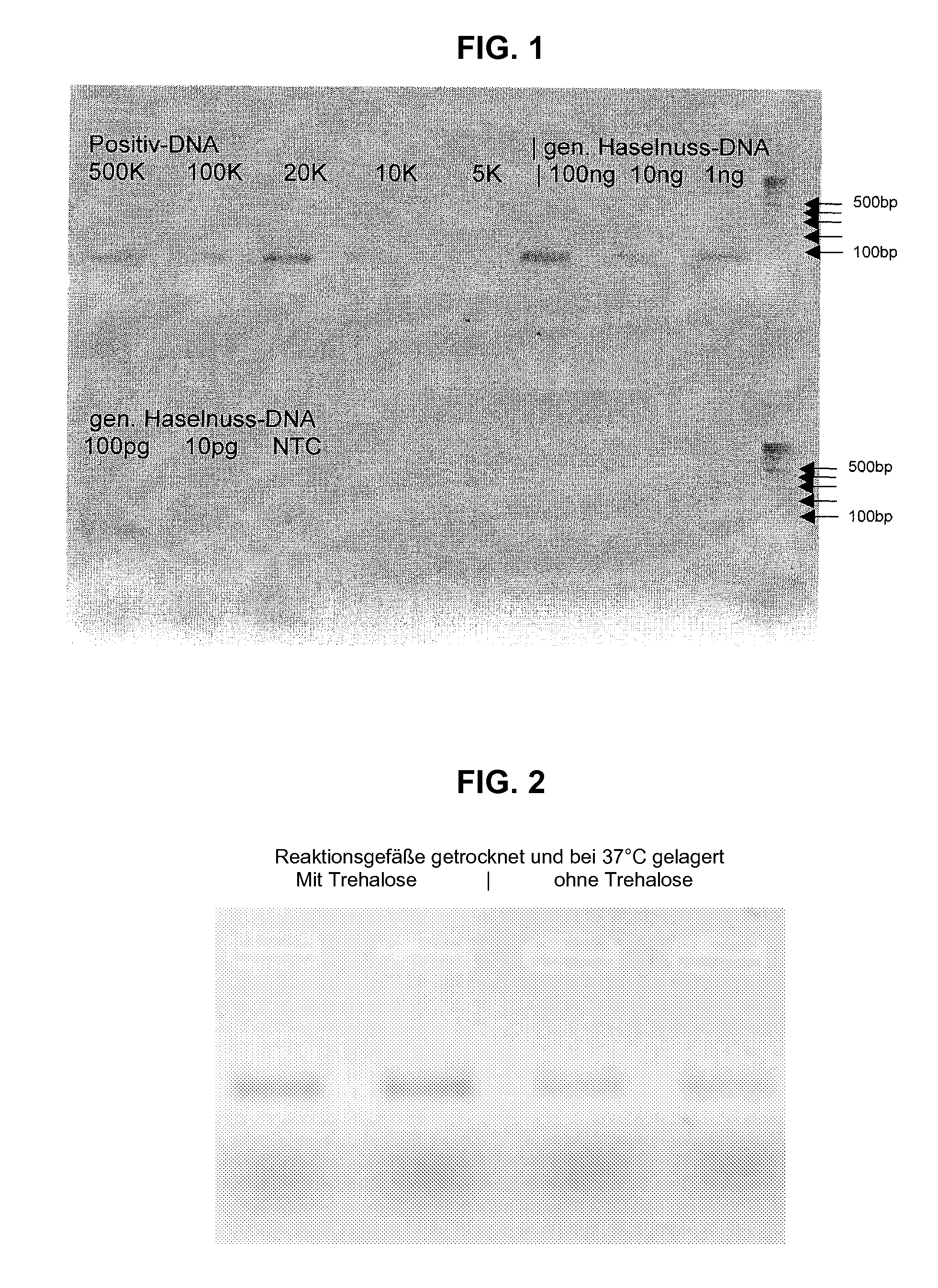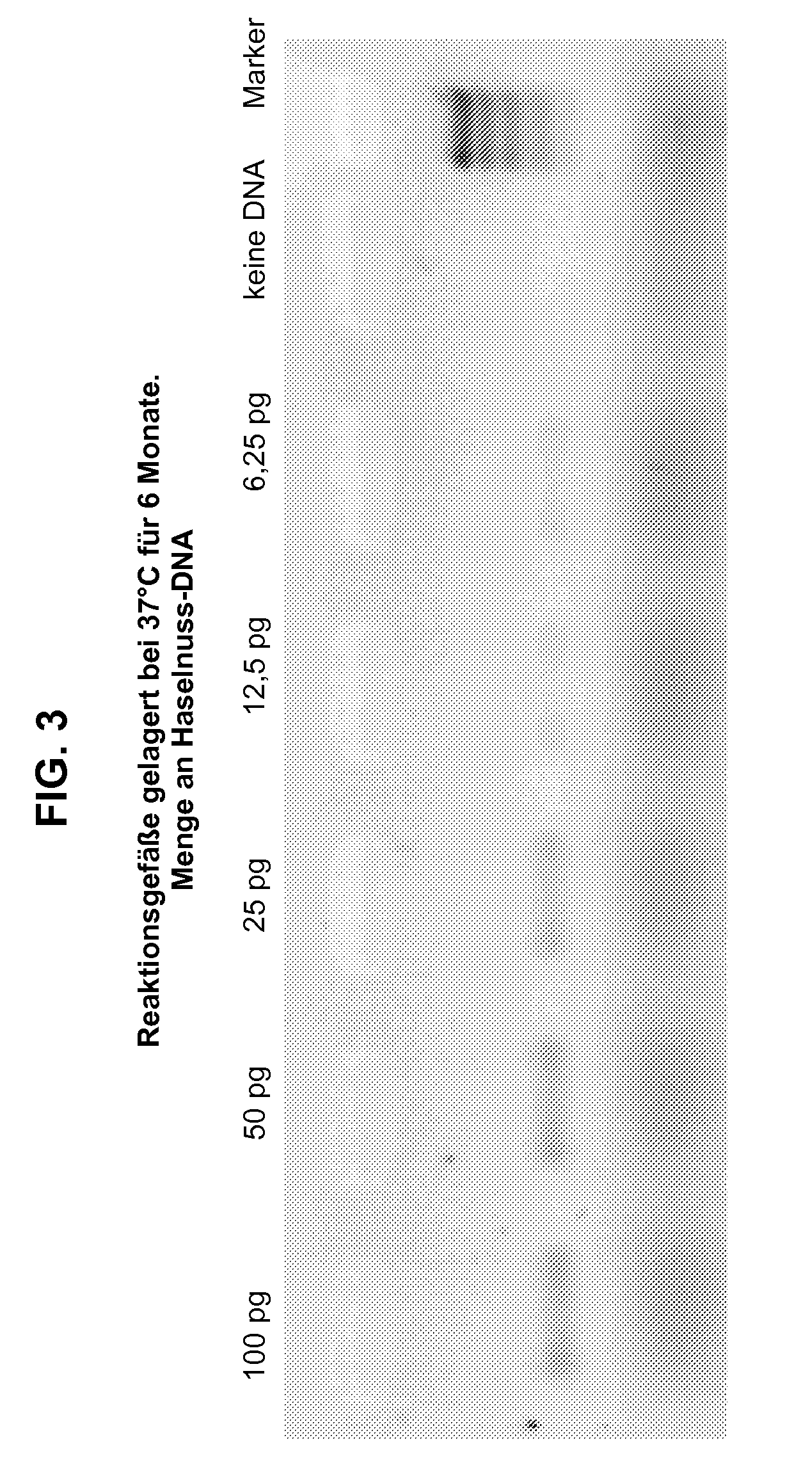Disposable articles for analysis and diagnostics for a laboratory
- Summary
- Abstract
- Description
- Claims
- Application Information
AI Technical Summary
Benefits of technology
Problems solved by technology
Method used
Image
Examples
example 1
Test for the Detection of Hazelnut (Corylus Avellana) in Food Products
[0032]Labelled polypropylene reaction vessels were supplied, in the wells of which (200 μL) known amounts of specific primers for the detection of hazelnut and whole hazelnut DNA as the reference nucleic acid were dried. This corresponded to a mixture of 0.75 μL first primer CaMAV-F3 with a concentration of 10 μMol / L, 0.75 μL second primer Ca-R05 with a concentration of 10 μMol / L, 2 μL of a 5 mMol / L trehalose solution and 0.5 μL water. The reference nucleic acid was 200 pg genomic hazelnut DNA, corresponding to 100 copies of the target sequence (amplicon sequence), and the five-fold and ten-fold thereof, respectively dissolved in 0.5 μL and added to the solution instead of water. The drying time was 3 hours at 40° C. under ambient pressure and was carried out in a dry heating oven. The reaction vessels were closed until use. No further PCR probes for real-time PCR were dried, even though that would be possible at ...
example 2
Ageing and Relative Sensitivity at Drying in the Presence and Absence of Trehalose; Stress Tests for the Assessment of the Storability / Durability / Yield
[0040]The labelled reaction vessels were produced as described in Example 1, with the difference that a number of reaction vessels with reference DNA were dried in the presence of trehalose and a number of reaction vessels with reference DNA were dried in the absence of trehalose. The reaction vessels were then stored for 6 months at 37° C. For the amplification, the reaction vessels were filled with 12.5 μL two-fold concentrated MasterMix (AmpliTaqGold® MasterMix) and 12.5 μL water, closed and put into the PCR-cycler (Eppendorf Mastercycler). The cycler profile was identical to the profile in Example 1. The subsequent gel electrophoresis showed a band at 78 bp for both reaction vessels. However, the intensity of the bands from the reaction vessels without trehalose was only about ⅓ of the band intensity from the reaction vessels with...
example 3
Sensitivity after Storing at 37° C.
[0042]The labelled reaction vessels were produced as described in Example 1 and stored for 6 months at 37° C. For the amplification, the reaction vessels were filled with 12.5 μL two-fold concentrated MasterMix (AmpliTaqGold® MasterMix) and 12.5 μL DNA-isolate, closed and put into the PCR-cycler (Eppendorf Mastercycler). The DNA-isolates comprised hazelnut DNA in amounts 100 pg, 50 pg, 25 pg, 6.25 pg and no hazelnut DNA. The cycler profile again was identical to that of Example 1. The gel electrophoresis showed amplification of a 78 bp long fragment in all the reaction vessels, except in the one which did not contain any hazelnut DNA (see FIG. 3).
[0043]Hence, if the primers are dried in the presence of 5 mMol / L trehalose, they maintain their activity, also after longer storage at elevated temperature.
PUM
| Property | Measurement | Unit |
|---|---|---|
| Temperature | aaaaa | aaaaa |
| Temperature | aaaaa | aaaaa |
| Pressure | aaaaa | aaaaa |
Abstract
Description
Claims
Application Information
 Login to View More
Login to View More - R&D
- Intellectual Property
- Life Sciences
- Materials
- Tech Scout
- Unparalleled Data Quality
- Higher Quality Content
- 60% Fewer Hallucinations
Browse by: Latest US Patents, China's latest patents, Technical Efficacy Thesaurus, Application Domain, Technology Topic, Popular Technical Reports.
© 2025 PatSnap. All rights reserved.Legal|Privacy policy|Modern Slavery Act Transparency Statement|Sitemap|About US| Contact US: help@patsnap.com



